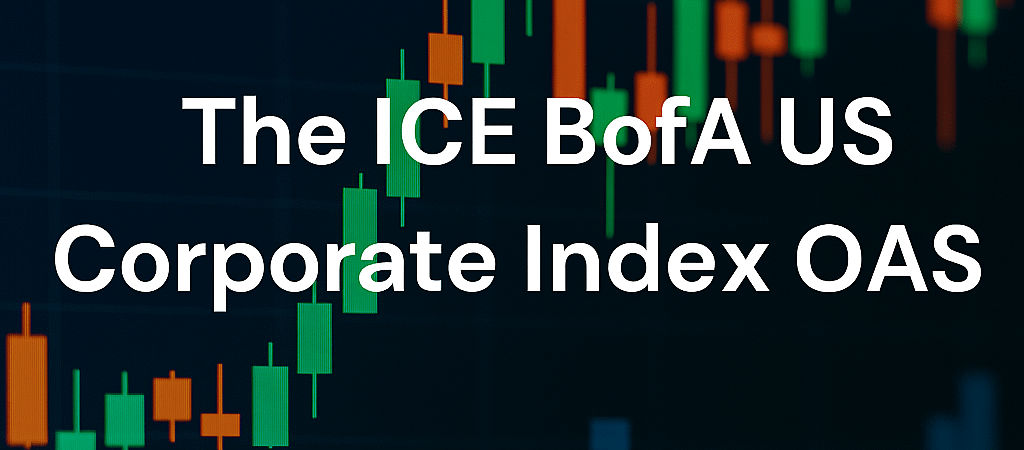The ICE BofA US Corporate Index Option-Adjusted Spread (OAS) is a key indicator for understanding the dynamics of the bond markets and, more broadly, investor sentiment. It measures the spread—namely, the yield differential—between a portfolio of U.S. corporate bonds and a risk-free benchmark, typically a U.S. Treasury security.
📊 What Does the OAS Tell Us?
An increase in the OAS indicates that investors are demanding a higher risk premium to hold corporate bonds, which are perceived as riskier than government securities. This often signals rising risk aversion, typically associated with concerns about economic slowdown or deteriorating corporate credit outlooks. Conversely, a narrowing of the OAS suggests improving investor sentiment and a reduced perception of risk.
🕰️ Historical Context of the OAS
- 2008 Financial Crisis: During the Great Recession, the OAS spiked significantly, reflecting heightened uncertainty and widespread risk aversion in the market.
- August 2018 Sell-Off: Triggered by inflation concerns and rising interest rates, this market correction led to a widening of spreads, indicating increased risk perception.
- 2020 – COVID-19 Impact: The pandemic caused a sharp surge in the OAS, consistent with extreme market volatility and economic uncertainty.
- December 2021 – Renewed Compression: The recent contraction in the OAS may be interpreted as a sign of investor confidence, despite challenges posed by inflation and tighter monetary policy.
📉 OAS vs. S&P 500
The OAS often exhibits an inverse correlation with the S&P 500. When the OAS rises, the S&P 500 tends to decline, and vice versa. This reflects a typical flight-to-safety behavior, where investors shift capital from equities to bonds during periods of uncertainty, and back again when confidence returns.
🔍 The Role of Volume Analysis
Combining OAS analysis with volume metrics can yield valuable insights into market timing. For instance, a rising OAS accompanied by high trading volumes may signal the onset of a more pronounced bearish phase.
🧠 Conclusion
The ICE BofA US Corporate Index OAS is a vital analytical tool for interpreting bond market trends and assessing investor sentiment. While not infallible, it can offer early signals of potential market movements. However, it is essential to integrate OAS analysis with other data sources and a comprehensive evaluation of the broader economic context.
📚 Further Exploration
- OAS and the Economic Cycle: Understanding how the OAS behaves across different phases of the economic cycle.
- Monetary Policy Impact: Examining how central bank decisions influence credit spreads.
- Comparative Risk Indicators: Analyzing the relationship between the OAS and other risk metrics, such as the VIX (Volatility Index).
